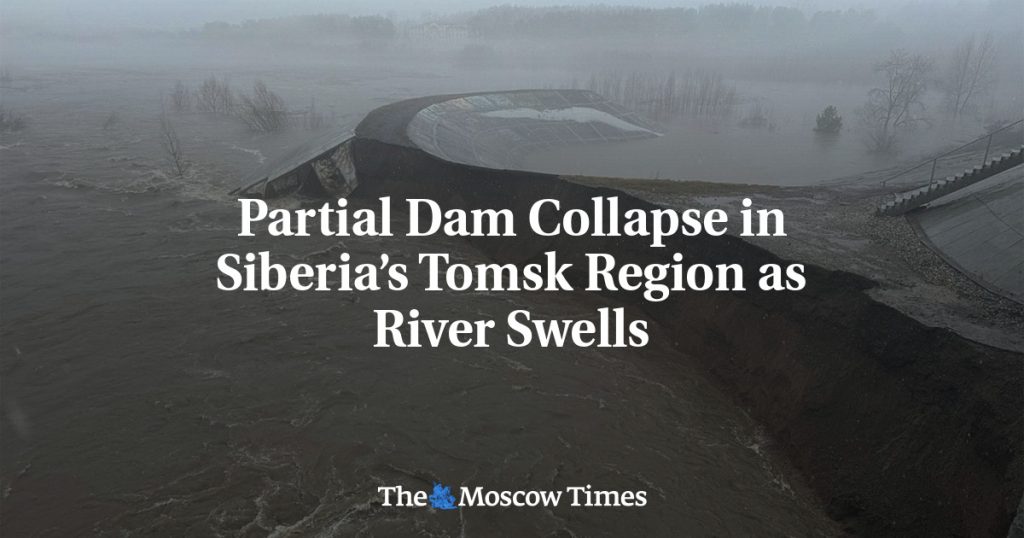In southwestern Siberia, the Tom River experienced significant swelling which resulted in a partial dam collapse in the city of Tomsk, according to local authorities. The mayor of Tomsk, Dmitry Makhinya, expressed concern over the destruction caused by the rising waters. Spring flooding due to melting ice is a common occurrence in certain regions of Russia, but this year’s heavy rainfall and warm spring weather have exacerbated the situation, leading to severe flooding in Russia’s Urals and western Siberia. Around 15,600 homes and 28,000 land plots in 193 Russian towns and cities across 33 regions have been submerged, with nearly 200 houses near Tomsk underwater and 84 people evacuated as of Monday.
The Tom River, with a length of 827 kilometers, is projected to reach a dangerous height of 8.9 meters between Monday and Wednesday, according to the Tomsk regional government. In order to prevent flooding resulting from ice jams, emergency officials conducted ice blasting in the river over the weekend. Mayor Makhinya expressed disapproval of Tomsk residents who were seen gathering to witness the annual ice drift, warning against taking unnecessary risks and endangering themselves for the sake of entertainment. Nearly 13,000 people have been evacuated from the Kurgan region near Kazakhstan due to the anticipation of flooding, with emergency officials expecting floodwater levels to rise in the Kurgan and Tyumen regions by mid-week.
The Kremlin announced that Russian Emergency Situations Minister Alexander Kurenkov had arrived in the city of Orsk, which was the original epicenter of flooding in the Orenburg region. Water levels in Orsk peaked over the weekend and are forecasted to recede early in the upcoming week. In the Kurgan region near Kazakhstan, almost 13,000 individuals have been evacuated as an additional precaution against potential flooding, as communicated by the governor’s office to the state-run news agency TASS on Monday. The government is closely monitoring the situation and expects floodwater levels to increase in the Kurgan and Tyumen regions within the next few days.
The severe flooding in the Tomsk region, exacerbated by heavy rainfall and warm spring weather, has led to the partial collapse of a protective dam in the city of Tomsk, triggering evacuations and widespread damage. Emergency officials have engaged in ice blasting to prevent flooding from ice jams in the Tom River, which is projected to reach dangerously high levels between Monday and Wednesday. Despite warnings from city officials, residents have been observed gathering to watch the annual ice drift, risking their safety. Evacuations have been carried out in the Kurgan region near Kazakhstan in anticipation of flooding, with Russian Emergency Situations Minister Alexander Kurenkov visiting the original flooding epicenter in Orsk for assessment.
The flooding crisis in western Siberia and the Urals has resulted in thousands of homes and land plots being submerged, displacing residents and causing widespread destruction. The situation is further exacerbated by forecasts of rising water levels in the Kurgan and Tyumen regions, prompting additional evacuations and emergency response measures. The Kremlin has dispatched officials to the affected areas, including the Orenburg region, to coordinate relief efforts and assess the impact of the flooding. The public is urged to prioritize safety and avoid unnecessary risks, as the severity of the floods poses a significant threat to communities along the swollen rivers in Russia.


